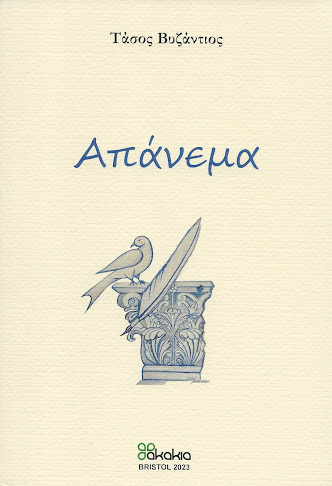Η Αγγλική σειρά Γραμματοσήμων που κυκλοφόρησε στις 7 Ιανουαρίου 2010 είναι αφιερωμένη στο θέμα «Κλασικά Εξώφυλλα Δίσκων» και παρουσιάζει 10 ξεχωριστά εξώφυλλα δίσκων των τελευταίων 40 χρόνων δισκογραφίας. Τα εξώφυλλα αυτά θεωρούνται έργα τέχνης. Τα Βασιλικά Ταχυδρομεία δήλωσαν για τη σειρά αυτή: «Each of these pristine stamps features an album cover that is as culturally significant as the music that it was designed to represent».
Την σειρά παρουσίασε ο Jimmy Page, θρυλικός κιθαρίστας των Led Zeppelin. Αξίζει να σημειωθεί ότι η Υπηρεσία Φιλοτελισμού έκανε τεράστια έρευνα, ψάχνοντας ανάμεσα σε χιλιάδες δίσκους, για να αποφασίσει για τα τελικά δέκα εξώφυλλα, τα οποία είναι τα παρακάτω:
Rolling Stones / Let It Bleed (1969)
Designed by Robert Brownjohn, the sleeve sculpture was based on the initial album title of ‘Automatic Changer’ with the added cake created by the then unknown Delia Smith.
Led Zeppelin / ’IV’ (1971)
The band’s fourth album had no mention of their name on the cover. The painting of the faggot-bearing old man was, it is said, found by singer Robert Plant in a Reading junk shop. For the cover it was nailed to a demolished house in Dudley.
David Bowie / The Rise and Fall of Ziggy Stardust and the Spiders From Mars (1972)
Heddon Street in London’s West End is the scene for the painting. Photographer Brian Ward helped to conceptualise Bowie’s notion of the alien pop star and the sleeve was designed by George Underwood with artwork by Terry Pastor.
Mike Oldfield / Tubular Bells (1973)
Designer and photographer Trevor Key brought Oldfield’s conception to life, of bent chrome metal piping cut out and overplayed on a photo of sea breaking on the south coast.
The Clash / London Calling (1979)
The third album from the band features Pennie Smith’s iconic shot of bassist Paul Simonon, considered one of the greatest rock photos of all time. Ray Lowry designed the artwork, paying homage to Elvis Presley’s debut album.
New Order / Power, Corruption and Lies (1983)
Peter Saville’s design juxtaposed French impressionist Henri Fantin-Latour’s painting with a colour-coded strip.
Primal Scream / Screamadelica (1991)
Paul Cannell became the in-house artist for the Heavenly and Creation record labels. For Creation he created this iconic image for Primal Scream’s album.
Pink Floyd / The Division Bell (1994)
Pink Floyd’ final studio album featured gigantic metal heads in long-time collaborator Storm Thorgerson’s design. The heads were drawn by Keith Breedon, sculpted by John Robertson and stood over nine-feet tall. Positioned in a field in Cambridgeshire, they were photographed over a two week period.
Blur / Parklife (1994)
Blur’s third album distilled the essence of London, and the racing greyhounds were captured by photographer Bob Thomas, and the sleeve designed by Chris Thomson and Rob O'Connor of London design firm Stylorouge. Blur is an EMI artist.
Coldplay / A Rush of Blood to the Head (2002)
Chris Martin of Coldplay saw this arresting image in Dazed and Confused magazine, and wanted it for the album cover. It is the work of Norwegian photographer Solve Sundsbo, and the result of medical imaging technology. Coldplay is an EMI artist.
Designed by Robert Brownjohn, the sleeve sculpture was based on the initial album title of ‘Automatic Changer’ with the added cake created by the then unknown Delia Smith.
Led Zeppelin / ’IV’ (1971)
The band’s fourth album had no mention of their name on the cover. The painting of the faggot-bearing old man was, it is said, found by singer Robert Plant in a Reading junk shop. For the cover it was nailed to a demolished house in Dudley.
David Bowie / The Rise and Fall of Ziggy Stardust and the Spiders From Mars (1972)
Heddon Street in London’s West End is the scene for the painting. Photographer Brian Ward helped to conceptualise Bowie’s notion of the alien pop star and the sleeve was designed by George Underwood with artwork by Terry Pastor.
Mike Oldfield / Tubular Bells (1973)
Designer and photographer Trevor Key brought Oldfield’s conception to life, of bent chrome metal piping cut out and overplayed on a photo of sea breaking on the south coast.
The Clash / London Calling (1979)
The third album from the band features Pennie Smith’s iconic shot of bassist Paul Simonon, considered one of the greatest rock photos of all time. Ray Lowry designed the artwork, paying homage to Elvis Presley’s debut album.
New Order / Power, Corruption and Lies (1983)
Peter Saville’s design juxtaposed French impressionist Henri Fantin-Latour’s painting with a colour-coded strip.
Primal Scream / Screamadelica (1991)
Paul Cannell became the in-house artist for the Heavenly and Creation record labels. For Creation he created this iconic image for Primal Scream’s album.
Pink Floyd / The Division Bell (1994)
Pink Floyd’ final studio album featured gigantic metal heads in long-time collaborator Storm Thorgerson’s design. The heads were drawn by Keith Breedon, sculpted by John Robertson and stood over nine-feet tall. Positioned in a field in Cambridgeshire, they were photographed over a two week period.
Blur / Parklife (1994)
Blur’s third album distilled the essence of London, and the racing greyhounds were captured by photographer Bob Thomas, and the sleeve designed by Chris Thomson and Rob O'Connor of London design firm Stylorouge. Blur is an EMI artist.
Coldplay / A Rush of Blood to the Head (2002)
Chris Martin of Coldplay saw this arresting image in Dazed and Confused magazine, and wanted it for the album cover. It is the work of Norwegian photographer Solve Sundsbo, and the result of medical imaging technology. Coldplay is an EMI artist.













































2 comments:
Αθάνατη Αγγλική μουσική βιομηχανία.
@ habilis,
Όντως κορυφαία μουσική παράδοση, δίνοντας πάντα σημασία στη λεπτομέρεια!
Post a Comment